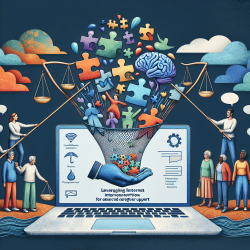Introduction
Clinical linguistics, a field that intertwines the intricacies of language sciences with the practicalities of speech-language pathology, is experiencing a renaissance. This interdisciplinary approach not only enriches our understanding of language disorders but also enhances therapeutic practices. The study "Clinical Linguistics: Analysis of Mapping Knowledge Domains in Past, Present and Future" provides an insightful analysis of the evolution and impact of this field.
Understanding Clinical Linguistics
Clinical linguistics is defined as the application of linguistic science to the study of communication disabilities encountered in clinical situations. This field has expanded from its initial focus on phonetics and phonology to encompass a broader spectrum, including semantics, discourse, and pragmatics. The integration of linguistic theories with clinical practice has paved the way for more effective diagnosis and treatment of language disorders.
Key Findings from the Research
The research utilized bibliometric and scientometric indicators to map the development of clinical linguistics from 1981 to 2022. Key findings include:
- The US, UK, and Australia are leading contributors to research in clinical linguistics.
- There is a significant increase in knowledge production over the last two decades, highlighting a growing interest and recognition of the field.
- Journals like Clinical Linguistics and Phonetics are pivotal in disseminating research findings.
- Emerging trends focus on semantic aspects, speech production measurement, and language ability, among others.
Implications for Practitioners
For practitioners, the integration of clinical linguistics into therapeutic practices offers numerous benefits:
- Enhanced Diagnostic Tools: The use of linguistic theories provides a deeper understanding of language disorders, enabling more accurate diagnoses.
- Improved Treatment Strategies: By applying insights from research, practitioners can develop more effective treatment plans tailored to individual needs.
- Interdisciplinary Collaboration: Collaborating with linguists and other specialists can lead to innovative approaches in therapy.
Encouraging Further Research
The study highlights the need for continued research and collaboration. Practitioners are encouraged to engage with the latest findings, attend conferences, and participate in webinars to stay updated. By doing so, they can contribute to the advancement of clinical linguistics and improve outcomes for individuals with language disorders.
Conclusion
The field of clinical linguistics holds immense potential for transforming speech-language pathology. By embracing research and fostering interdisciplinary collaboration, practitioners can enhance their skills and provide better care for those with communication disorders. To delve deeper into the findings, you can access the original research paper Clinical Linguistics: Analysis of Mapping Knowledge Domains in Past, Present and Future.










